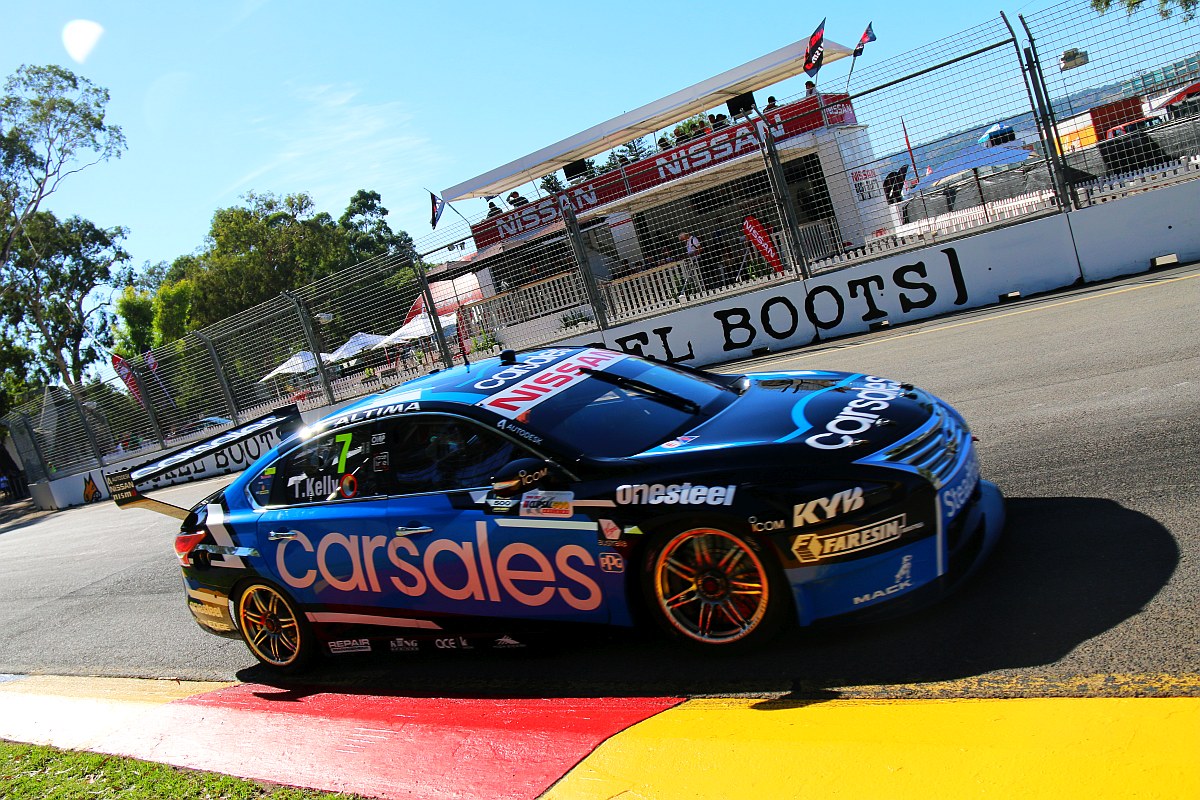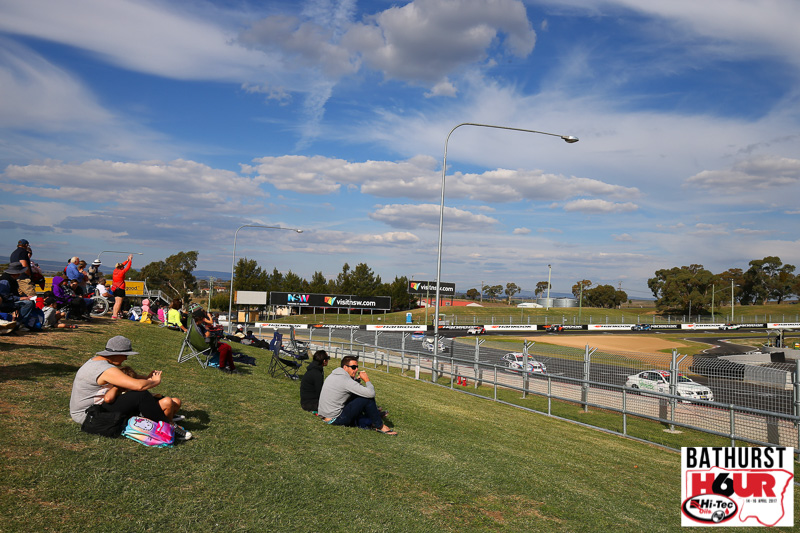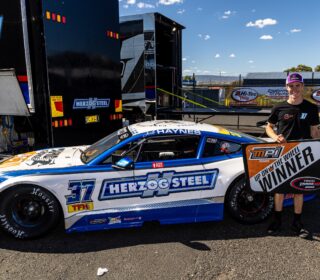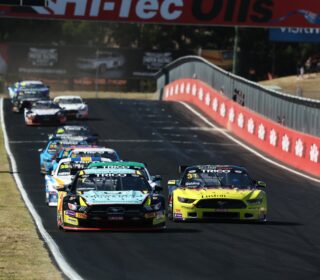WALKER: FINDING THE NEXT FANS

Mid the other week at around lunch time, I found myself invited in to the Qantas Club by a colleague.
As I sat there with my beard that features the odd bizarrely white hair, and a head that is embarrassingly devoid of hair altogether, it dawned on me: I was the youngest person in the room.
While I looked around at people who proudly possessed frequent flyer cards in the single digits, I thought to myself – what does the future hold for Qantas?
In 2017, they sit in a pretty rosy place. They’re back making a profit, and they hold down the bulk of lucrative big dollar business market.
Typically at the airport, you could find myself across the street at the Virgin Lounge, chowing down on the toasted sandwich bar with a much younger gathering of people.
Importantly for Virgin, they have sucked this new generation of travellers in at the ground floor. Once you’ve achieved a level of status with one airline, you are most likely locked in for life.
In a few years from now, when the Qantas clientele pull the pin on their jet setting day jobs to join the local seniors golf tour, who will fill their seat at the Club’s bar?
Sucked in for life
As with most of my thoughts, I quickly related the situation back to motorsport.
I’ll never forget my first time. The year was 1987, the venue was Lakeside.
The first time I ever saw a race car at speed in the flesh was from the passenger seat of my aunt’s metallic brown Datsun.
As we were driving up the hill from the spectator entry gate, a Group A VK Commodore came rushing towards us from the top of the Eastern Loop.
The sound and the speed was incredible. I remember standing at the kink in the main straight later that day absorbing the racing; the scream, fizzle and pop from the turbos, and the roar of the V8s.
That was me done. For life.
So, how as an industry are we going to draw in and retain the next generation of fans?
This issue isn’t exclusive to our sport – all sports, and in general, all activities are facing challenges on how to be future proofed.
The issues and challenges
For motorsport in Australia, the factors that define a sizable portion of the fan base are changing. The dynamic that makes ‘car people’ is moving.
To start with, teens these days are much less likely to scoot off and get their driver’s licence on their 17th birthday. That interest in the freedom of driving is waning.
Cars are expensive, public transport is typically better organised and integrated than ever, people ride their bikes (heck, I do that), and added to that, Uber has opened the floodgates for change in personal transportation.
Why pay for a car, registration, fuel and servicing, when for a few bucks a complete stranger will drop you at your destination?
If people don’t want to drive themselves, why would they spend their spare time watching other people drive around in circles?
In Australia, the ripples from the death of local automotive manufacturing haven’t yet been fully felt.
For generations, you were a Holden or Ford man. That car culture was intrinsically linked to motorsport; where would motorsport be today without loyal fans of the Commodore and Falcon?
Once upon a time, there was pride in having a large family sedan. Now the market is split between the efficiency of small four cylinder cars, or the convenience of an SUV. Cars are now more than ever a tool to get you from A to B, rather than a symbol of loyalty to a marque.
Don’t get me wrong, there are cool cars still on the market (I would murder for a new Mustang), but that Aussie muscle car way of life is now essentially frozen in time.
Modern day vehicles are complex beasts. For generations before mine, car owners would have to have a certain level of mechanical sympathy and knowledge. While the DIY mechanic still exists, the convenience of the free shuttle bus from the local dealership workshop makes the servicing decision simple for modern folk in 2017.
Longer Term Questions
Thinking a longer game, if we like it or not, autonomous vehicles are coming. The systems are here now, and are only going to gain acceptance. How will robot driven cars integrate with vehicles driven by evolved apes? How many generations will it be before the art of driving will be relegated to the history books?
Another inevitability is that the earth will one day be sucked dry of oil. If environmental reasons come into play, there will probably be some left in the ground when engines other than those propelled by fossil fuels rule the roads.
Another change that is coming for society is how we consume our media intake. Daily newspapers will soon be relegated to a museum, while the of current forms of free to air and subscription television face challenges.
Presently, sports reap a sizable portion of their income from TV rights agreements.
The internet generation is here, with on-demand platforms like Netflix leading the charge.
Players like YouTube (owned by Google) and Twitter have already dabbled in live sporting broadcasts. Right now, Facebook is in talks with Major League Baseball to acquire live streaming rights.
The times, they are a changing…
The future

Don’t take the above to be a prophecy of doom and gloom – I’m a glass half full sort of guy, but the reality is that there will be challenges for motorsport as we know it in the short and long term futures.
The traditional base of ‘car people’ might be changing, but the industry still has many strengths to work from.
A lot of competent race series around the globe are already figuring out how to deliver quality content quickly over the internet through social media. It’s easy for a good motorsport video clip to go viral – just look at the Jordan Cox sensation from the Improved Production races at the Bathurst 12hr and Clipsal 500.
Presently, a lot of the social interaction is used to drive people to watch the full races, typically through traditional outlets. The balancing act is going to be the trade-off between new age delivery platforms, and rights paying broadcasters.
Everyone wants sports to be broadcast live, ad free, and cost free. The reality is that someone along the line must pay, be it competitors, subscribers or advertisers. Sporting bodies need income to survive, but how that is going to be achieved is tough to tell.
One of the by-products of the ‘internet generation’, is that young people these days are all about experiences. Take a random scroll through Instagram – people are all about showing off the cool things that they experience in life.
“I am at work today,” or “I am watching TV” aren’t cool. Meeting a race car driver is cool. Getting up close to a drift track is cool. What motorsport needs to work at is promoting the fact that it is cool, and offer opportunities for punters to take advantage of.
Video games are a staple of the demographic motorsport should be targeting. The work Nissan and Playstation have done with the GT Academy has been brilliant, but there must be more that the sport can do to tap into this market. It’s ready made, but building a solid link between the lounge room and the race track will be hard work.
Are virtual, augmented and mixed realities just passing fads, or can motorsport capitalise on them as they are developing?
Supercars clearly had a successful brainstorm before they organised for the “Cars” movie series to have an activity centre brought along to all events. Encouraging kids at a very young age to attend is perfect.
A duty of care rests with promoters to be smart with how they attract families to the race track. Admission ticket price points must remain realistic, while the angle taken to promote events has be well planned to attract a broad audience.
Outside of big ticket races like Supercars or Formula 1, the some of the best attended events on the calendar are historic ones, such as the Muscle Car Masters or Phillip Island Historics. Multiple bodies are pushing to have a F5000 style series revived, and Indycar is going retro in ditching the bodywork on its current day fug-boxes.
What does this say? People do care about what is being served up to them on the race track. The cars, the quality and quantity of racing matter. Stars are important, but fans need more than just big names.
Another factor that I believe is important are street circuits. Modern people are lazy. If you can showcase yourself to a massive audience on their doorstep, it is much easier than making them drive an hour out of town.
Clearly investment in permanent facilities will forever be vital, but if you can put on a big show to first time watchers, they will be more likely to want to make that effort to see more in the future.
While motorsport is clearly a sport, any activity that is on TV is a form of entertainment.
We have to strive to be offering a product that is appealing against all of the other forms of entertainment.
The 20/20 format of cricket massively improved the entertainment factor of that sport to a wider audience – what have we got up our sleeve?
WORDS: Mark Walker







